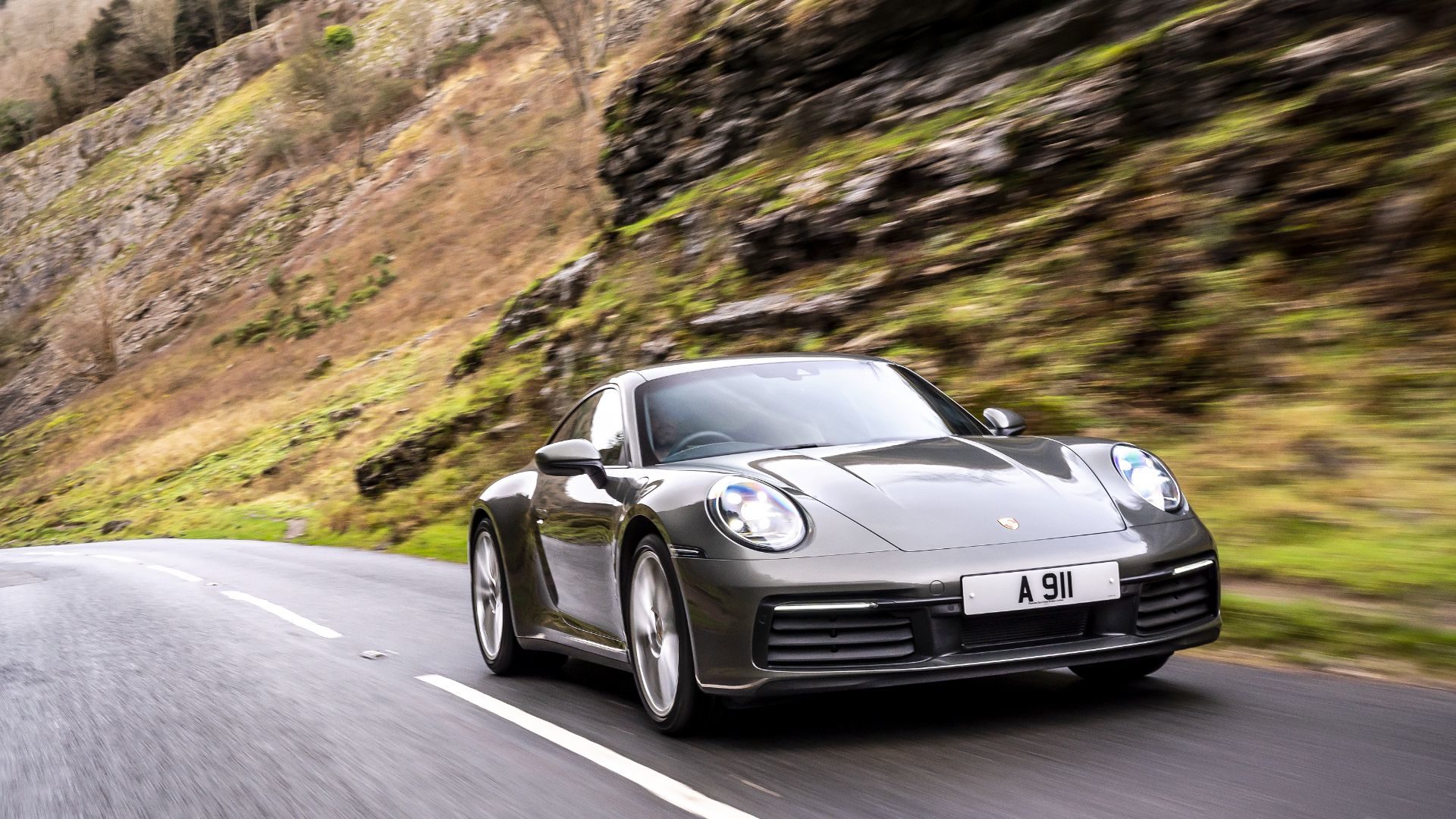
People seem to be falling out of love with sports cars. Registrations are down across Europe, with some models seeing a major slump in sales.
Blame the popularity of SUVs or soaring household bills, but it certainly isn’t down to a lack of choice. Indeed, our list of the best sports cars shows a segment in rude health, with buyers able to choose from a range of hardcore and soft-focus options.
So, without further ado, here are the best sports cars to buy in 2024. Our choices are presented in alphabetical order.
Alpine A110
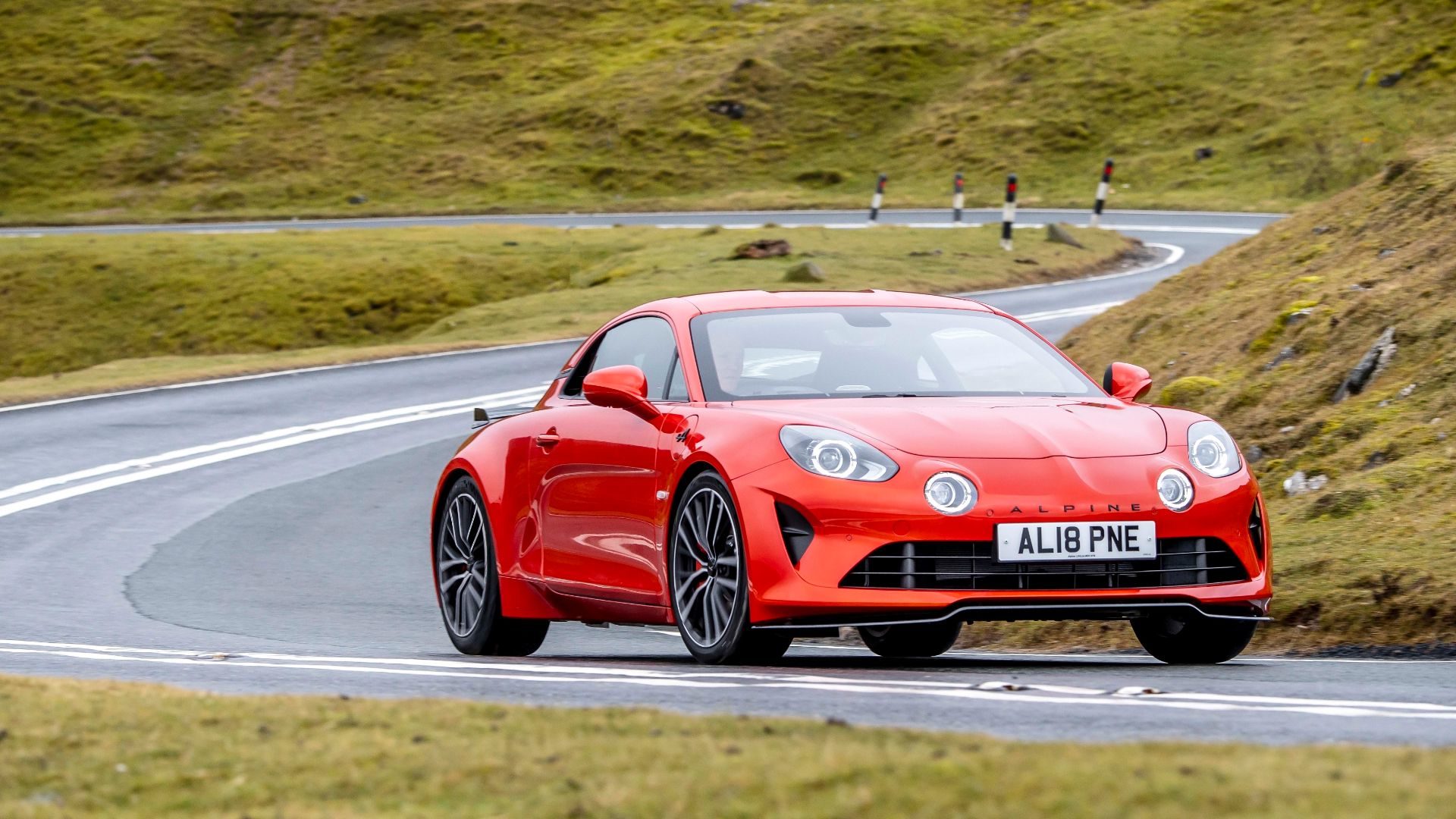
The Alpine A110 proves you don’t need the default Porsche Boxster or Cayman to experience the joys of a relatively affordable, daily-driver sports car. This pretty French coupe was designed to deliver one thing: unadulterated fun. Prices start from a whisker under £50,000.
Power comes from a 1.8-litre turbocharged engine that produces 252hp in standard form, or 292hp if you opt for the A110S. Those figures are similar to hard-hitting hot hatchbacks, but the A110 has lightness on its side. The basic A110 tips the scales at just 1,098kg, helping it to sprint to 62mph in just 4.5 seconds.
We said: ‘The Alpine A110 is a brilliant sports car. If you’re not charmed by its petite, retro styling, you’re probably better served flicking through the pages of What Crossover? magazine. It is a car designed by enthusiasts, for enthusiasts. Practicality can wait for another day.’
Caterham Seven
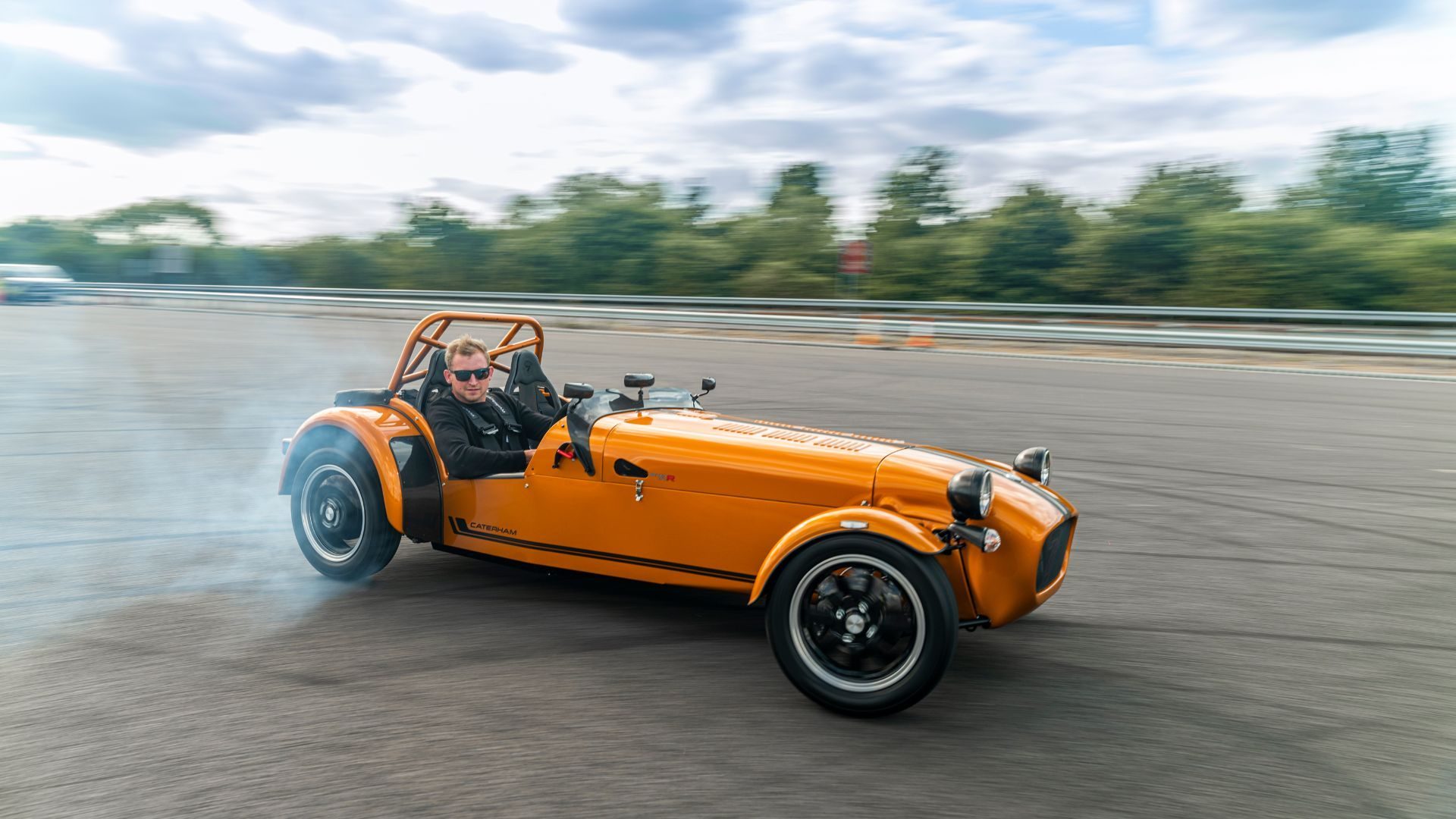
Caterham has been playing the role of wasp at the supercar picnic since 1973. That’s when the company acquired the rights to build and develop the Lotus Seven, one of Britain’s most driver-focused sports cars. Today, prices range from £29,000 to £55,000, or you can have the chassis, boxed components, engine and gearbox, and assembly guide delivered to your garage.
The Seven 170 (pictured) uses a 660cc three-cylinder Suzuki engine and will hit 60mph in a brisk 6.9 seconds. At the opposite end of the range, the wild Seven 620 packs a supercharged 2.0-litre Ford motor for 60mph in just 2.8 seconds.
Driving the Seven 170R, we said: ‘A lot of modern sports cars feel frustrating because you can rarely exploit their performance on the road. The Caterham is the opposite; you can wring it out almost anywhere.
‘Sitting almost atop the live rear axle, the tarmac inches from your elbows and a view of the front suspension jostling ahead, you’re acutely aware of the road and how the chassis reacts to its every nuance. The steering feels disconcertingly direct at first, but you soon tune into its vivid, hyperactive responses. Compared to a “normal” car, it feels like the Seven has downed a double espresso.’
Read our Caterham Seven 170R review
Ford Mustang
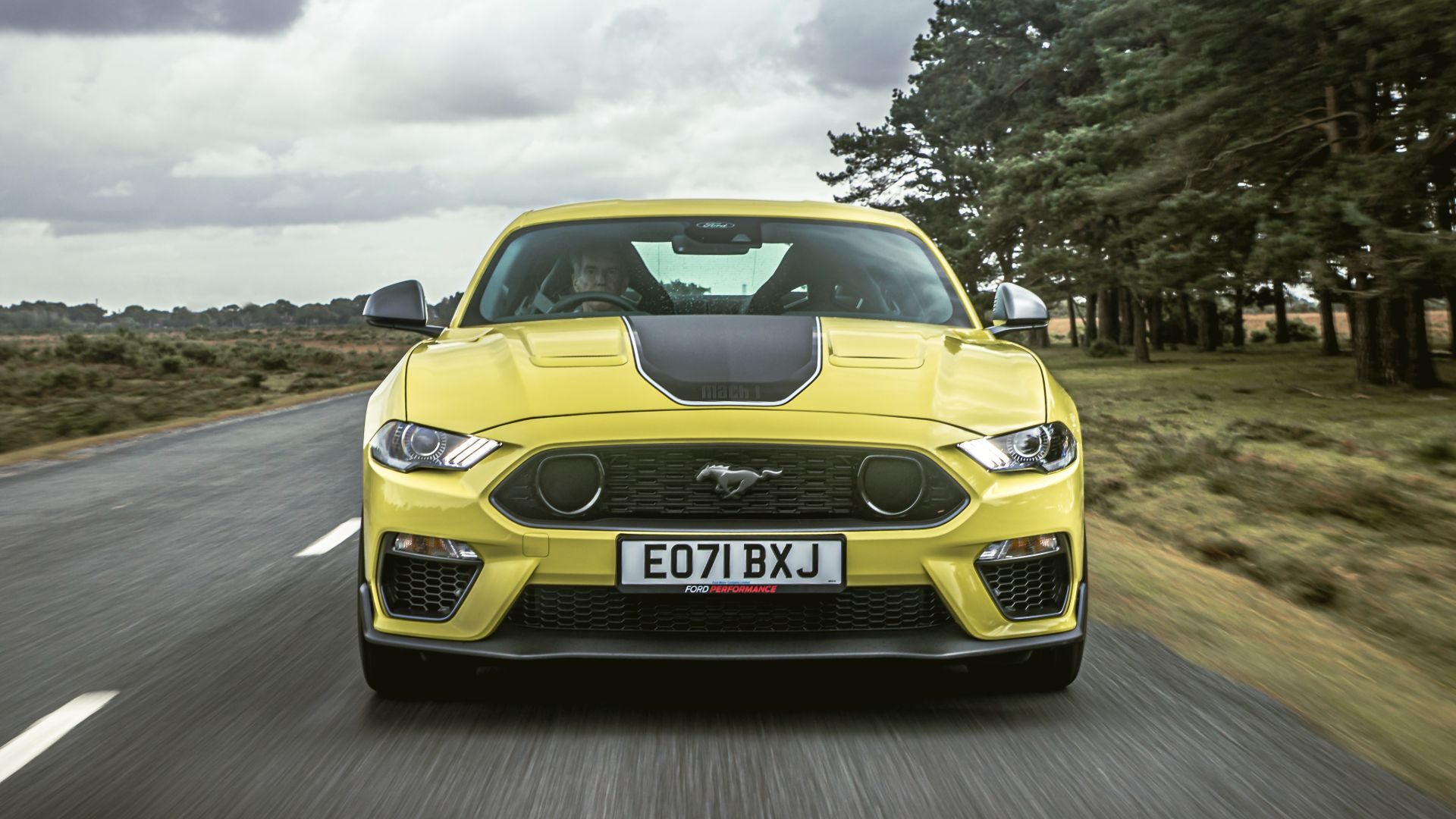
The Ford Mustang is the world’s best-selling sports car. It’s an automotive icon, and as American as baseball or spring break. You can now buy an electric Mustang – the Mach-E SUV – but we’re talking about the old-school V8 here. Available as a GT coupe or California Edition convertible, it costs from £50,000.
A new Mustang arrives next year, with sharper styling and a tuned version of the venerable 5.0-litre V8. In the meantime, the flagship Mach 1 is the pony car with the most, um, horses – its 460hp good for 0-62mph in 4.8 seconds. The soundtrack guarantees goosebumps, too.
Driving the Mustang Mach 1, we said: ‘The Mustang still has a Drag Strip mode, along with Line Lock for tyre-smokin’ burnouts, but the Mach 1 also pays some heed to going around corners. Chassis mods include new front and rear subframes, firmer front springs, stiffer anti-roll bars and retuned Magneride adaptive dampers. A new splitter and rear diffuser also help boost downforce by 25 percent. The result is a car that feels less all-at-sea on a British B-road, with accurate steering and taut body control.
‘If you want to go sideways, you can, but the Mach 1 is too polished to play the all-out hooligan. That doesn’t mean it has morphed into a flighty sports car, though. It remains quite a physical experience, with a heavy six-speed manual shift – a 10-speed auto is optional, if you enjoy pulling paddles – and a sense of weight shifting that betrays its 1,851kg heft.’
Read our Ford Mustang Mach 1 review
Jaguar F-Type
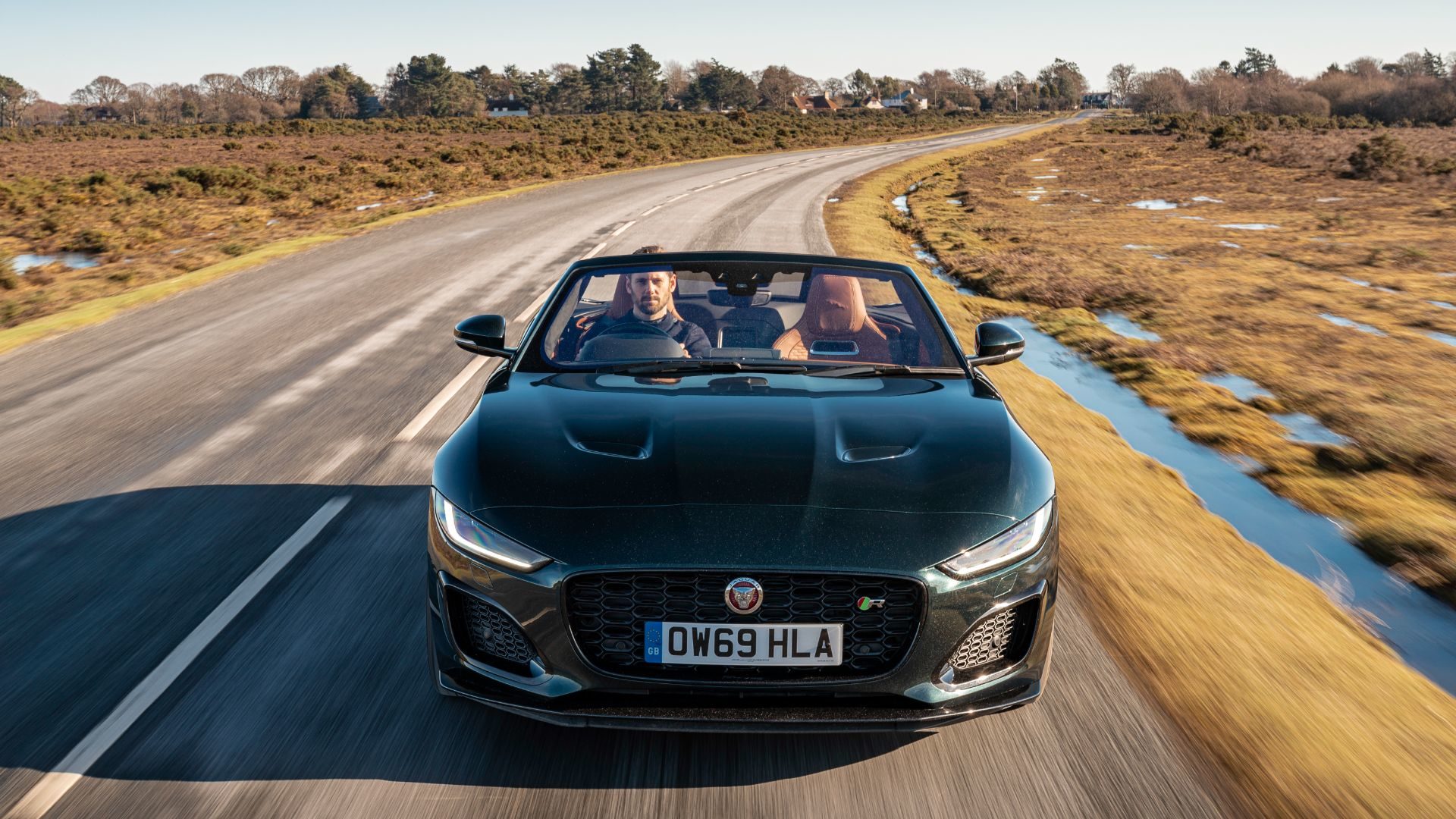
Much has changed in the eight years since Jaguar launched the F-Type. Having diversified into SUVs, the company recently announced that it will become a pure electric brand by 2025. This means that the F-Type comes with a ‘best before’ date. Order now while stocks last, etc.
An update in late 2019 tweaked the styling, including slimmer headlights, new bumpers and a broader grille. Inside, the car now features a 12.3-inch driver display, while its touchscreen media system offers Apple CarPlay and Android Auto connectivity. Coupe and convertible versions are available, along with a choice of 2.0-litre four-cylinder and 5.0-litre V8 petrol engines.
Driving the F-Type P300, we said: ‘Anyone spending £50,000 on a sports car is spoiled for choice. The A110 is the most engaging to drive, the Cayman a close second and a more accomplished all-rounder.
‘The F-Type is now a more leftfield alternative, and a pricey one after a few options are added. However, if you love its looks – and who doesn’t? – the P300 is brimful of uncomplicated charm.’
Read our Jaguar F-Type P300 review
Mazda MX-5
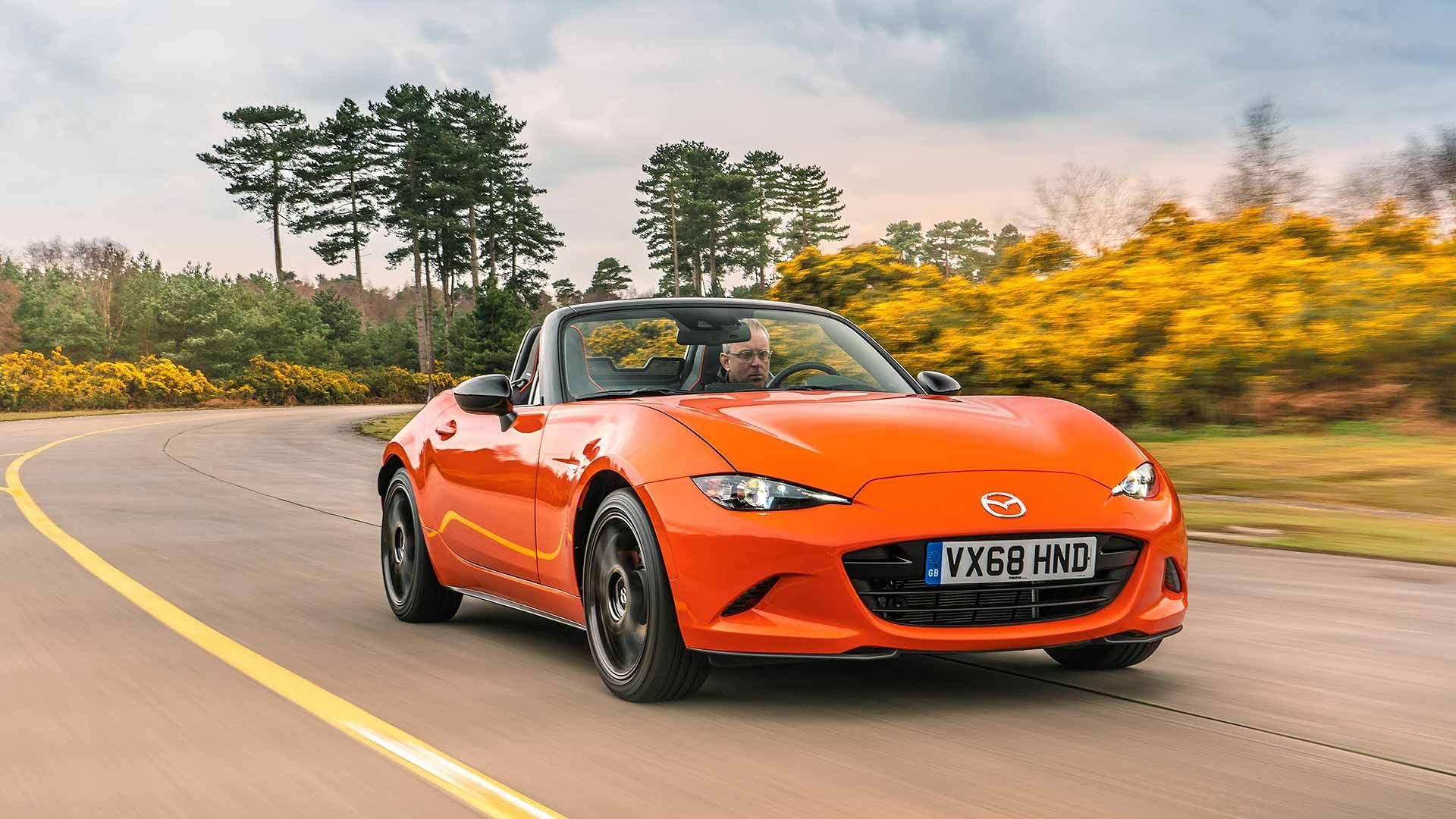
Why spend £50,000 on a sports car when half that amount could get you behind the wheel of the world’s favourite roadster? Over four generations and 33 years, the Mazda MX-5 has cemented a reputation for being the benchmark affordable sports car.
For a while, the brilliant 132hp 1.5-litre Skyactiv-G was our engine of choice in the MX-5. With just enough power to entertain, a sublime six-speed gearbox and superb rear-wheel-drive handling, it was the perfect MX-5. Perfect, that is, until Mazda tweaked the 2.0-litre engine. Now with 184hp, it injects the MX-5 with added excitement. It’s genuinely thrilling.
We said: ‘It is delicate, adjustable and floods you with feel and feedback. Compared to a hot hatch, it almost feels over-soft, as the body rolls in corners and the suspension is supple over bumps. This, however, is because it’s so light, meaning Mazda hasn’t had to battle with managing excess weight.
‘Best driven with fingertips, it’s nimble and flows beautifully, feeling exactly like the 1960s throwback Mazda intended since day one.’
Morgan Plus Six
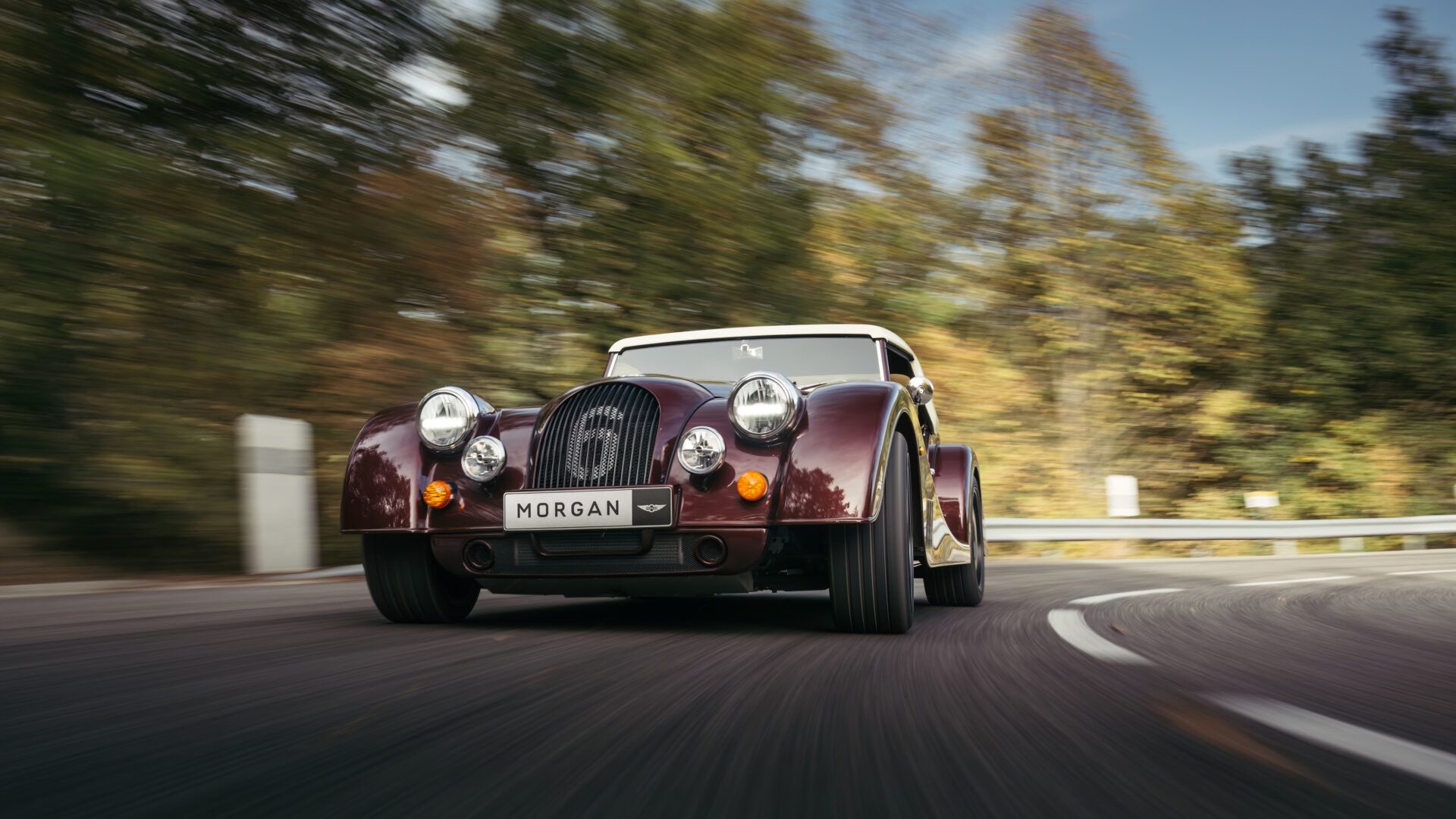
It looks familiar, but the Morgan Plus Six is a different animal to the V8 beasts that roamed the Malvern Hills in days of yore. The BMW engines remain, but today’s Morgan Plus models rely on turbocharged four- and six-cylinder units, mostly mated to automatic transmissions.
The Morgan Plus Six is like an original remastered. It’s powered by the same 3.0-litre ‘six’ found in the BMW Z4 M40i and Toyota GR Supra, with 340hp sent to the rear wheels. On a dry road, it’ll hit 62mph in 4.2 seconds.
We said: ‘Even in slower corners, the Morgan needs some coaxing and cajoling – it doesn’t pivot around you like a mid-engined Lotus Elise – yet it’s decorous enough to drive every day. Not that many owners will.
‘Outside the city, you can unleash an entirely different animal. With no electronic aids except ABS and a kerb weight some 420kg lighter than a Supra, the rear-driven Morgan can go very sideways indeed. Unless you are Lewis Hamilton, a tentative right foot is judicious on damp roads.’
Read our Morgan Plus Six review
Morgan Super 3
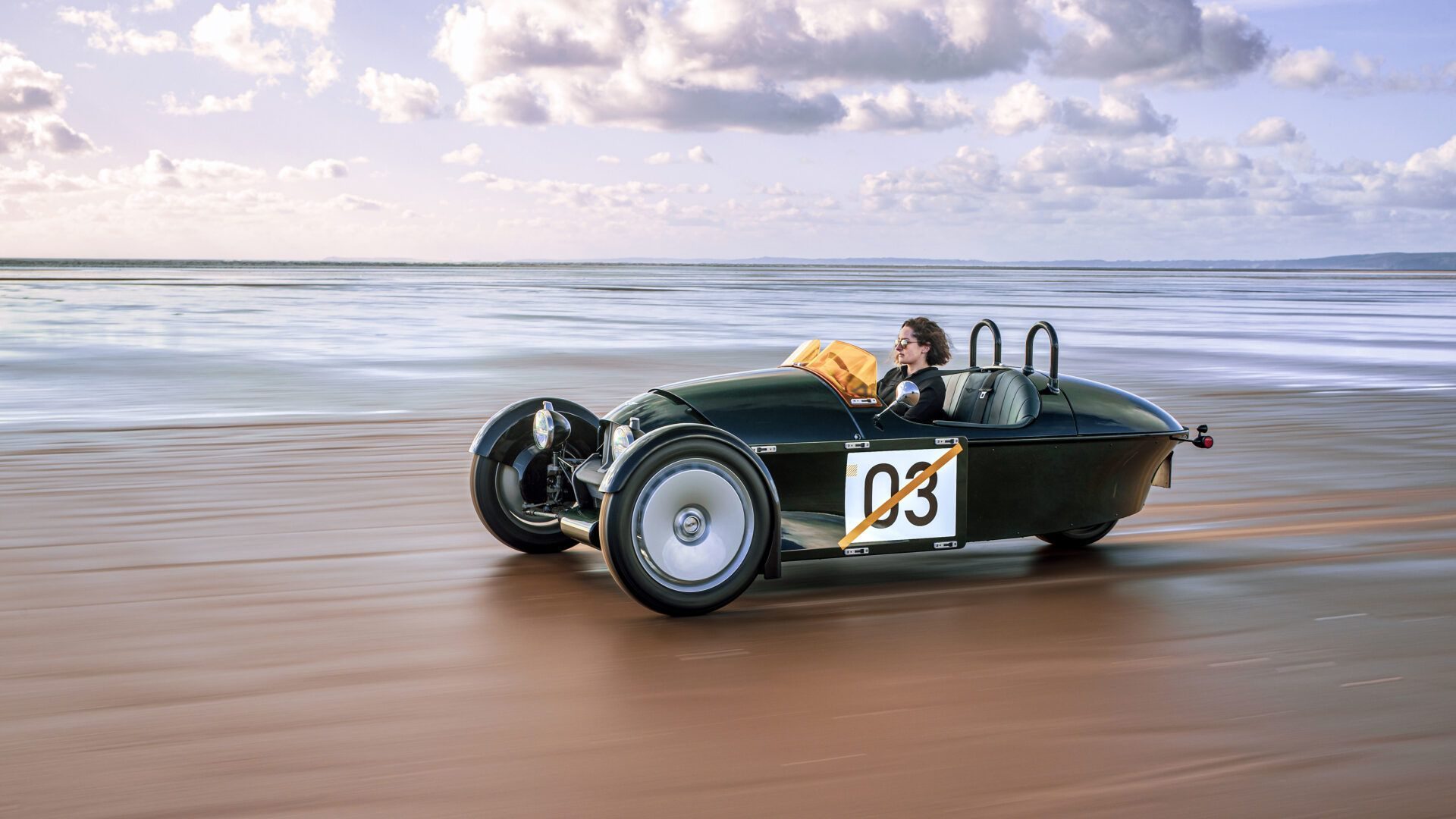
Is the Plus Six a tad too sensible for your taste? Would you prefer something with no roof whatsoever, or less than the usual complement of wheels? Allow us to introduce the Morgan Super 3: perhaps the silliest and most entertaining car we’ve driven this year.
Elbows out and side-exit exhaust rasping beneath your right ear, the Super 3 feels half-way between a car and a classic motorcycle. A 120hp three-cylinder Ford engine powers its single rear wheel, propelling this 635kg featherweight to 62mph in 7.0 seconds. Prices start from £52,000 and there are endless options for customisation.
We said: ‘The novelty (and uncertainty) of having three wheels prevents me from pushing the Super 3 too close to its grip limits, but it’s joyful even at sensible speeds.
‘The lazy steering requires big inputs, keeping you constantly busy, while the Mazda MX-5 gear shift is super-slick. It’s a car you have to tussle with, rather than simply point and squirt, and that’s all part of its charm.’
Read our Morgan Super 3 review
Porsche 718 Boxster and Cayman
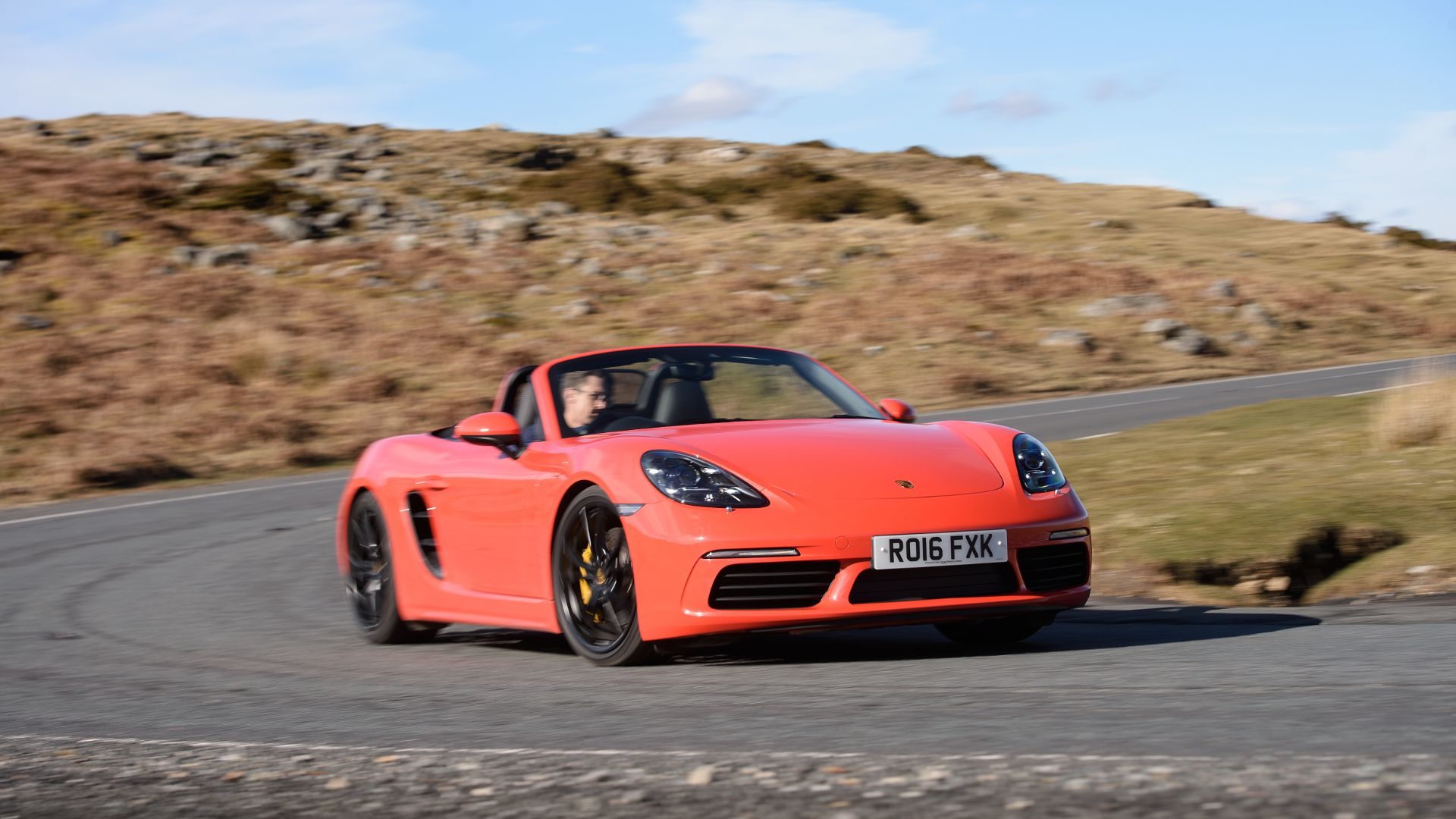
When the Porsche 718 is this good, you have to wonder whether it’s worth spending nearly £90,000 on a Porsche 911. Granted, it’s not quite as simple as that, but in the context of the rest of the Porsche range, the 718 Boxster and Cayman seem good value for money.
The GTS 4.0 versions are our pick of the range. A return to the flat-six engine might sound like a U-turn following the company’s switch to four-cylinder power, but it was music to the ears of Porsche purists. Alternatively, if your budget stretches that far, the flagship Cayman GT4 RS blurs the boundaries between sports car and supercar. It’s outrageously exciting – and a guaranteed future classic.
Driving the Cayman GT4 RS, we said: The air intakes that replace the rear side windows are located just behind your ears, and the effect is like hugging the speakers at a Motorhead gig. As the revs soar, the voracious gasp of induction is overwhelmed by the bandsaw blare of six wide-open throttle bodies. The piercing top notes are pure racing car.
‘Other aspects of this factory hot-rod feel equally intense. Where lesser Caymans – including the GT4 – have been criticised for their long gearing, the RS has shorter ratios for instant, almost maniacal throttle response. The PDK gearbox is brutally quick too, every shift delivered with machine-gun pace and precision. Much as I love a manual, the dual-clutcher’s ruthless immediacy certainly suits the car’s character.’
Read our Porsche Cayman GT4 RS review
Porsche 911
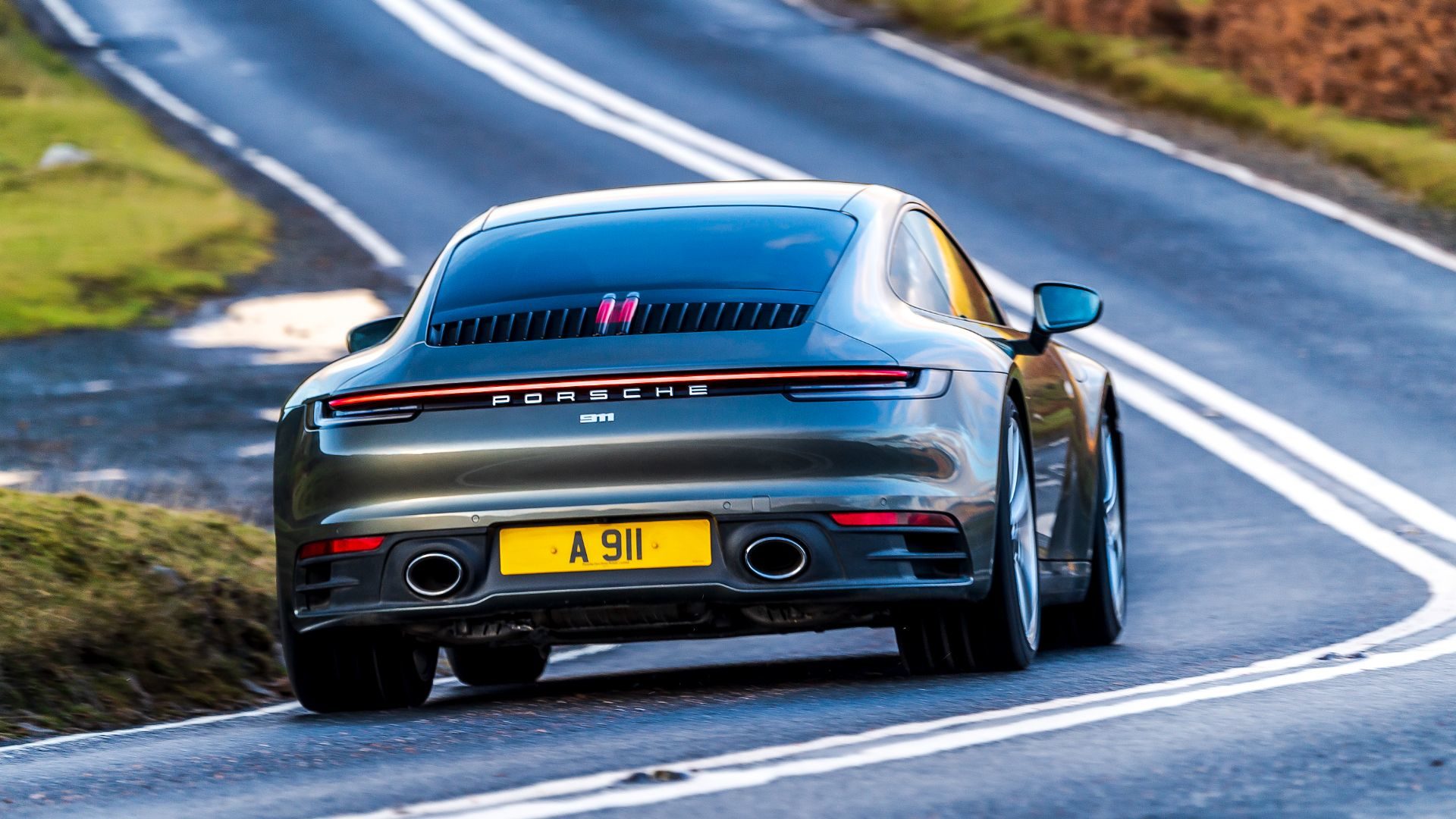
How did the Porsche 911, which looks like an elongated Volkswagen Beetle and has its engine behind the back axle, become the most iconic sports car of them all? Partly through sheer longevity, we suspect (the original Type 901 debuted in 1964), but mainly through constant evolution. While much has changed in 58 years, however, the 911 has always been exciting to drive.
Here, we’re focused on the Carrera models – you’ll find the racier Turbo and GT3 in our Best Supercars to buy in 2024 roundup – which are available in coupe, cabriolet or flip-and-fold Targa body styles. The 385hp Carrera is plenty quick enough for UK roads, but our choice would be the 450hp Carrera S with a manual gearbox.
Driving the 911 Carrera S manual, we said: ‘Switch into Sport or Sport Plus modes and the engine will rev-match on downshifts, saving you the trouble of having to heel-and-toe. The manual version also comes with dynamic engine mounts and the Sport Chrono package as standard (a steering wheel mode switch, Sport mode for the stability system, tyre temperature indicator and a stopwatch atop the dashboard). It all adds to the impression of being a 911 for serious drivers.
‘As for the rest of the car, it’s every bit as good as reputation suggests. A snarling twin-turbo flat-six, beautifully balanced chassis, superbly techy interior and best-in-class build quality make this instantly iconic Porsche – to quote my review of the standard Carrera – ‘the only sports car you need’. The manual may not be the default choice, but the 911 certainly is.’
Read our Porsche 911 Carrera S manual review
Toyota GR86
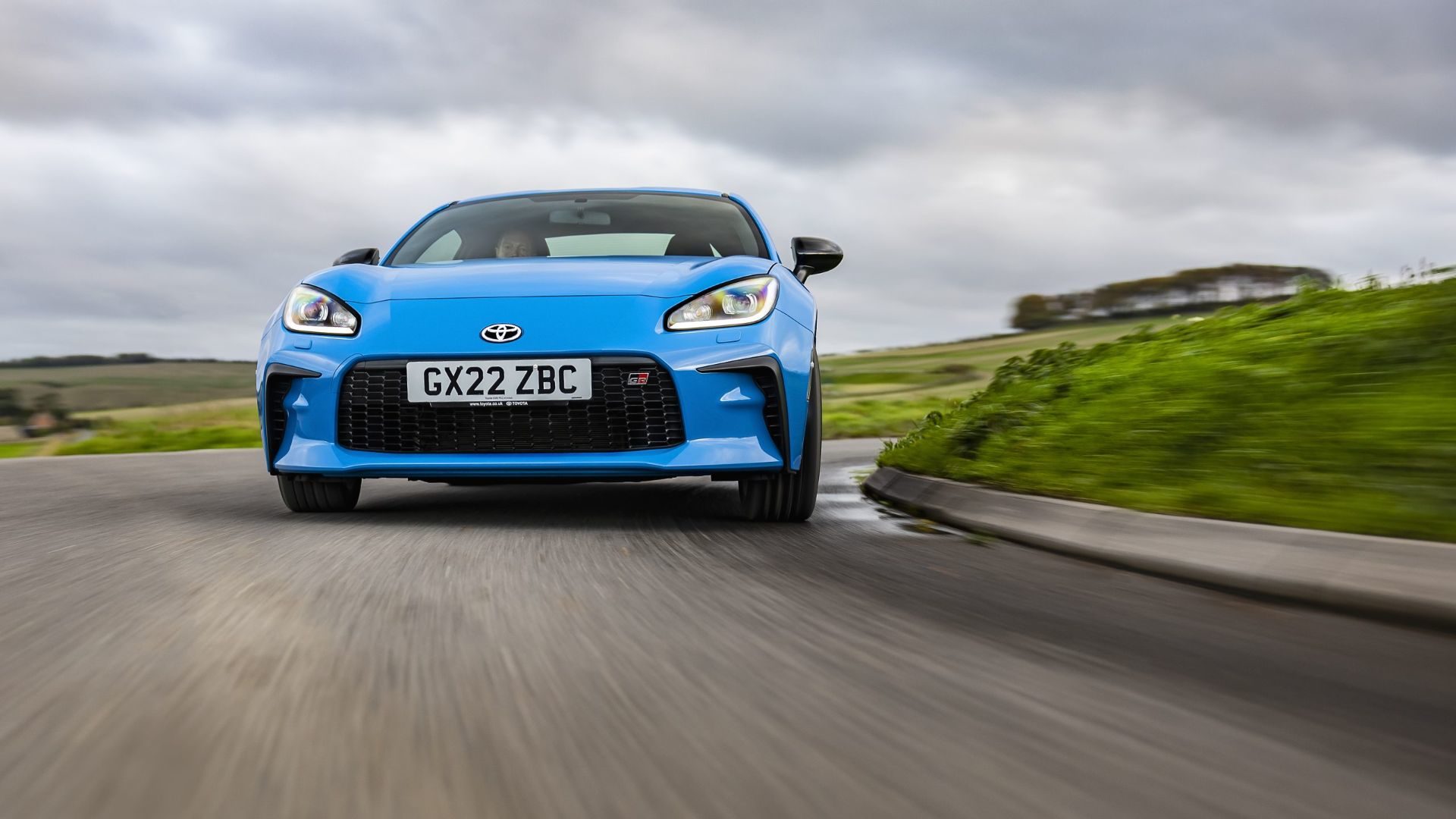
The new Toyota GR86 is the successor to the much-loved GT86, with a 234hp 2.4-litre ‘boxer’ engine and a similar surfeit of power over grip. It’s a pure sports car of the sort that will soon be extinct, serving up constant feedback and fun. Sadly, buyers are all too aware of time running out, and the entire UK allocation for the GR86 has already been sold. If you want one now, you’ll have to buy used (and probably pay a hefty premium over the £29,995 list price).
Aside from its propensity to oversteer, the GR86 offers a practical hatchback boot, two child-sized rear seats and typical Toyota build quality. Yes, the interior is a bit plasticky and fuel economy could be better. But trust us, you really won’t care. This car makes even a mundane journey feel special.
We said: ‘The added torque transforms how the GR86 drives, answering the main criticism of its predecessor. Its growly flat-four no longer relies solely on high revs, pulling strongly through the mid-range to its 7,400rpm limiter. The control weights feel carefully calibrated, too, with endlessly chatty steering, perfectly spaced pedals, a snappier manual gearbox (an automatic is optional – don’t even think about it) and a proper handbrake.
‘While the GT86 was famously shod with low-grip ‘Prius tyres’, the new car wears larger 18-inch wheels with more grown-up Michelin Pilot Sport 4 rubber. It’s harder to unstick, no question, but still very willing to go sideways, particularly if you select Track mode for the stability control. Damp roundabouts in November are laugh-out-loud fun.’
Toyota GR Supra
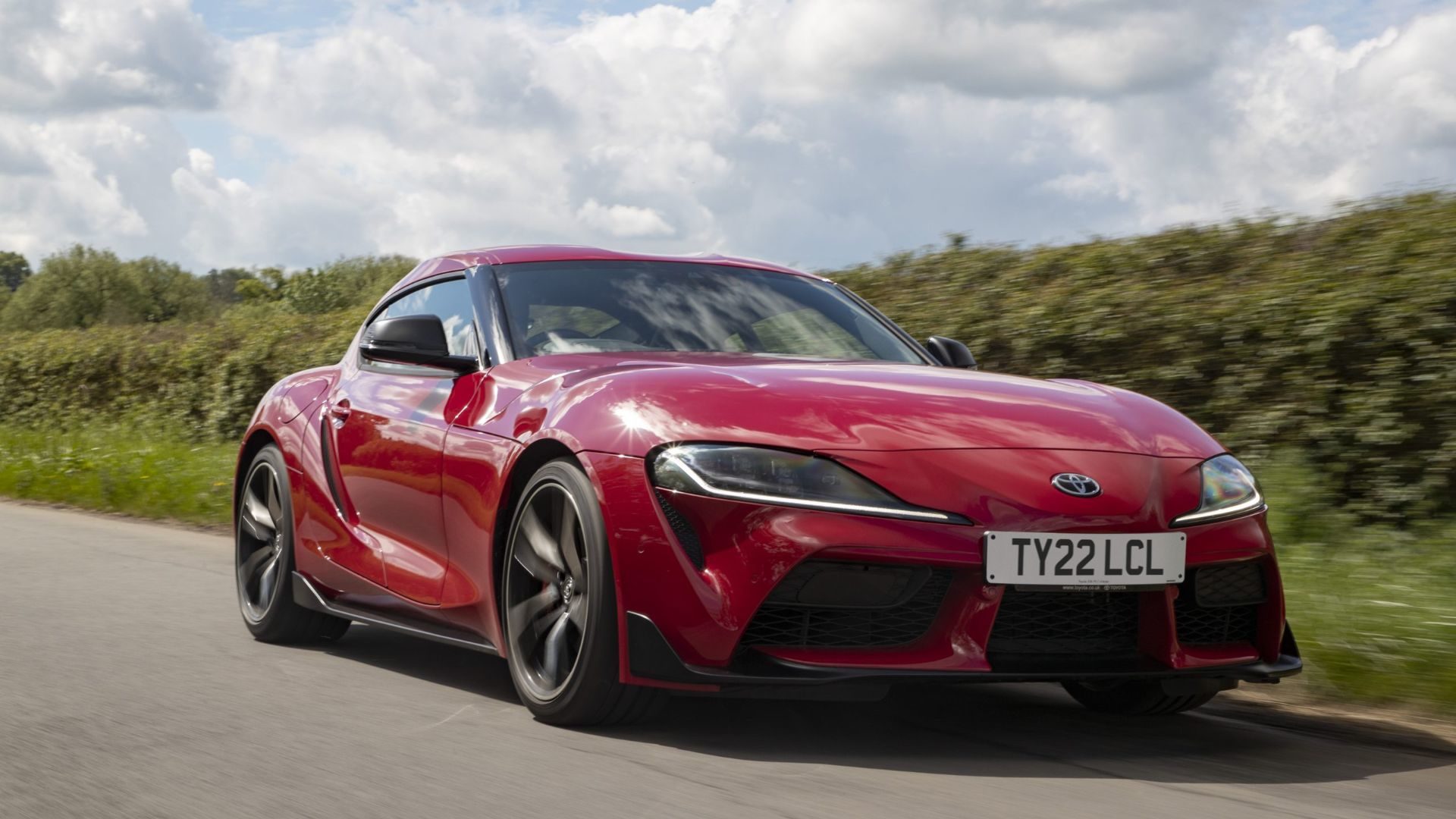
Given the hullabaloo surrounding the GR86 and GR Yaris hot hatchback, you might have forgotten that the Supra exists. It’s no coincidence that Toyota recently launched a manual version, hoping to keep enthusiasts talking about its flagship sports car. We’ll be driving it soon.
The Supra’s styling divides opinion, but we love its angular and very Japanese aesthetic. Priced from £49,500, the 258hp 2.0-litre version is lighter and usefully cheaper than the 340hp six-cylinder Supra 3.0. The car’s chassis responds well to more power, though – and indeed a few modifications – so we’d go for the full-fat version if possible.
Driving the GR Supra 3.0, we said: ‘There have been mumblings in the media that the Supra is too “BMW”. I’m not convinced that matters. It feels closer to a well-sorted M car than a BMW Z4 – and that alone shows the depth of Toyota’s input. So, you pays your money and takes your choice. But really, there are no wrong decisions here.”
Read our Toyota GR Supra review
READ MORE:
Hi, I am amazed that you have three Porsches and two Toyotas in this list, but did not find space to include another iconic sportscar, which is one of the few still offering rear wheel drive with a manual gearbox – the Nissan Z. And, yes, I am a fan of the Z, having owned a 260Z in the 80s and currently owning a 50th Anniversary Edition 370Z. In my admittedly biased view, the Z is a better sports car than the Toyota GR Supra (also known as a BMW Z4).